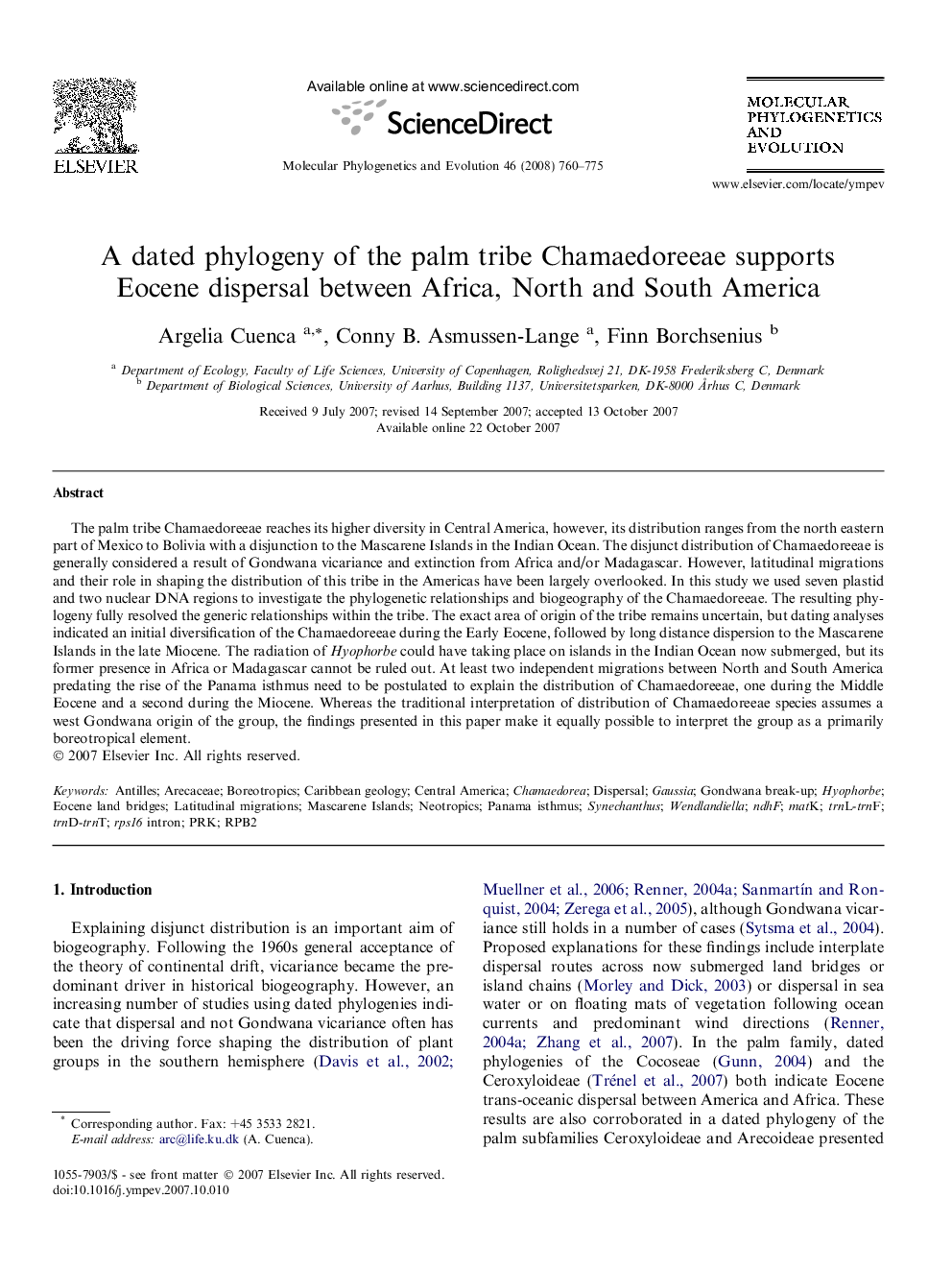| Article ID | Journal | Published Year | Pages | File Type |
|---|---|---|---|---|
| 2835346 | Molecular Phylogenetics and Evolution | 2008 | 16 Pages |
The palm tribe Chamaedoreeae reaches its higher diversity in Central America, however, its distribution ranges from the north eastern part of Mexico to Bolivia with a disjunction to the Mascarene Islands in the Indian Ocean. The disjunct distribution of Chamaedoreeae is generally considered a result of Gondwana vicariance and extinction from Africa and/or Madagascar. However, latitudinal migrations and their role in shaping the distribution of this tribe in the Americas have been largely overlooked. In this study we used seven plastid and two nuclear DNA regions to investigate the phylogenetic relationships and biogeography of the Chamaedoreeae. The resulting phylogeny fully resolved the generic relationships within the tribe. The exact area of origin of the tribe remains uncertain, but dating analyses indicated an initial diversification of the Chamaedoreeae during the Early Eocene, followed by long distance dispersion to the Mascarene Islands in the late Miocene. The radiation of Hyophorbe could have taking place on islands in the Indian Ocean now submerged, but its former presence in Africa or Madagascar cannot be ruled out. At least two independent migrations between North and South America predating the rise of the Panama isthmus need to be postulated to explain the distribution of Chamaedoreeae, one during the Middle Eocene and a second during the Miocene. Whereas the traditional interpretation of distribution of Chamaedoreeae species assumes a west Gondwana origin of the group, the findings presented in this paper make it equally possible to interpret the group as a primarily boreotropical element.
